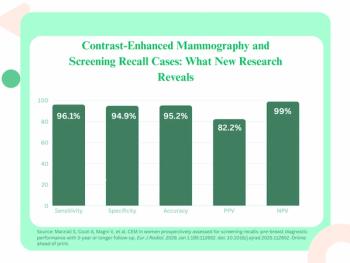
The Deficit Reduction Act: What we can do about it
After a late night congressional session in December, Congress passed the 2005 Deficit Reduction Act, sending a shock wave that’s still reverberating through the radiology community. Referred to by many in this community as “reduction without proper representation,” this draconian act targets the so-called “freestanding advantage.”
After a late night congressional session in December, Congress passed the 2005 Deficit Reduction Act, sending a shock wave that's still reverberating through the radiology community. Referred to by many in this community as "reduction without proper representation," this draconian act targets the so-called "freestanding advantage."
As the bill outlines, outpatient centers stand to see their reimbursement slashed by as much as 48% under the Medicare Physician Fee Schedule (MPFS); providers are bracing for a blended 32% reduction. Cuts as drastic as this threaten the outpatient provider industry, which is already encumbered with high capital costs.
These cuts threaten to severely affect profit margins of an outpatient center, while also stunting growth and expansion and crippling purchases of new technology. The DRA has left many in a quandary, stipulating substantial cuts in services including MRI, CT, PET, ultrasound, nuclear medicine, vascular imaging, and bone densitometry. The only exception is mammography, which - at least for the time being - has escaped reimbursement reduction.
To understand what is at stake requires only a quick look at some of what is prescribed by the DRA. The average outpatient center can expect reductions as high as 48% for head scans with and without contrast and more than 21% in cuts for an MRI of the knee. CT scan reimbursements may be cut as much as 20% for pelvis exams without contrast. Some ultrasound procedure payments could be reduced as much as 35%; densitometry by as much as 40%; and PET/CT scans by as much as half.
What is a center to do in the face of this looming reimbursement scheme? And how can vendors help? First, follow the three simple "p's": planning, prevention, and preparation.
Planning. If you are building a pro-forma model for a new capital purchase or opening a new center, the following formula might be useful. An MRI center that performs a mix of orthopedic and neuroimaging with 35% contrast should plan on at least a 32% reduction in MRI reimbursement in 2007. CT providers should factor in a 13% to 15% decrease in reimbursement in 2007. Different payment formulas exist for each site, depending on the type of studies typically offered. For example, if a center performs more neuro procedures than orthopedic ones, the reduction will be greater than 32%.
Additionally, it is irrelevant whether centers operate on a fiscal or calendar year. Many radiology groups and hospitals start capital budget meetings early in the year, anticipating battles for a specific piece of equipment when there are limited capital purchase dollars. They are preparing for the worst and hoping for the best. Many small centers have "parked" purchases to see how the DRA will affect the bottom line. Some of this reaction is unjustified. Some companies are well positioned to weather the storm due to current volumes, payer mix, and market control. But unless these groups are educated and develop a plan, vendors will see them rein in capital purchases for 2007.
Prevention. Providers and vendors have an opportunity to lessen the impact of this bill by stopping its implementation. To succeed, everyone should become involved. Spread the word or donate to the lobbying effort. Write letters to local congressional representatives and educate them about the impact of the DRA. Explain the potential ramifications of the DRA on delivery and continuity of quality healthcare among their constituents. If given time, Congress can be shown a plan to reduce the spending they need to balance their budget without damaging our industry in the process.
Soon, lobbyists in Washington expect to finalize a draft of the bill that would delay implementation of section 5102(b) of the DRA for two years. The bill is expected be introduced in both houses in early June. Potential sponsors are Gordon Smith (R-OR) in the Senate and Joseph R. Pitts (R-PA) in the House. There is still time to make a difference.
Preparation. The American College of Radiology and vendor Web sites are devoting informational pages to the DRA. A table demonstrating the impact of the DRA specific to CPT codes, as well as white papers on improving efficiency and lowering overhead costs, can be found on various Web sites. (The following sites can serve as good reference points and help provide guidance through this intricate maze: the American College of Radiology, www.acr.org; the Radiology Business Management Association, www.rbma.org; Siemens, www.usa.siemens.com/deficeitreductionact; and GE Healthcare, www.gehealthcare.com.)
Vendors have been helpful in lending monetary support to the lobbying effort and can also assist centers by calculating pro-forma numbers to forecast the possible impact. Using a simple formula of weighted CPT averages and a Medicare mix allows a vendor to predict purchase effects on its business. Vendors should analyze backlogs and be prepared to justify sales based on a center's increased throughput. If this law sticks, efficiency will be the key to survival in any center.
Steven R. Renard is president and chief operating officer of Liberty Pacific Medical Imaging, based in Encino, CA, which provides third-party management, consulting, and medical development services. He owns and operates medical diagnostic imaging centers, primarily in California.
Newsletter
Stay at the forefront of radiology with the Diagnostic Imaging newsletter, delivering the latest news, clinical insights, and imaging advancements for today’s radiologists.




























